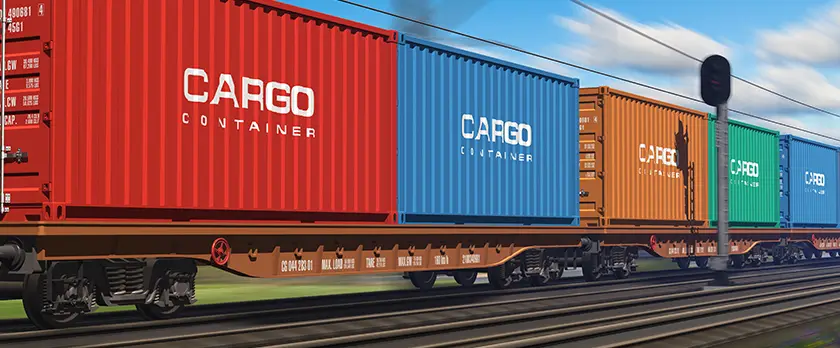China UK Sea Freight vs Rail Freight

When comparing rail freight with sea freight for shipping goods from China to the UK, several factors come into play, including transit time, cost, environmental impact, and flexibility. Here’s a detailed comparison of both modes of transportation:
1. Transit Time
Sea Freight
- Typically takes between 30 to 40 days to ship from China to the UK.
- Transit time can vary based on the shipping route, port congestion, and weather conditions.
Rail Freight
- Generally faster, taking about 18 to 22 days.
- Rail routes often pass through multiple countries, which can influence transit times due to border controls and varying infrastructure efficiency.
2. Cost
Sea Freight
- Generally cheaper, especially for large volumes of goods.
- Cost-efficient for bulk shipments due to economies of scale.
- Costs can fluctuate based on fuel prices, demand, and shipping lane congestion.
Rail Freight
- More expensive than sea freight, but often cheaper than air freight.
- Offers a cost-effective alternative for medium-volume shipments where faster delivery is valued.
- Costs can vary based on route, service provider, and the type of goods being shipped.
3. Environmental Impact
Sea Freight
- Emits lower CO2 per ton-kilometer compared to air freight, but higher than rail.
- Large vessels tend to be more fuel-efficient per unit of cargo, but the environmental impact can still be significant due to the sheer volume of goods shipped and the use of heavy bunker fuel.
Rail Freight
- Generally considered more environmentally friendly than sea freight.
- Rail emits lower CO2 per ton-kilometer than sea freight, especially in regions where electricity is used to power trains and sourced from renewable energy.
- Beneficial for reducing the carbon footprint of long-distance cargo transportation.
4. Flexibility and Reliability
Sea Freight
- Offers a high level of flexibility in terms of volume and types of cargo.
- Ports are widespread and well-equipped to handle a variety of shipping needs.
- However, reliability can be affected by factors such as port congestion, strikes, and customs delays.
Rail Freight
- Increasingly flexible, with growing infrastructure connecting major industrial regions.
- More reliable in terms of schedule compared to sea freight, given fewer variables like weather conditions affecting transit.
- Limited to certain corridors and requires transshipment for door-to-door delivery beyond rail terminals.
5. Accessibility and Network
Sea Freight
- Extensive global network with numerous ports facilitating international trade.
- Highly accessible for goods from coastal regions but may require additional transportation for inland delivery.
Rail Freight
- Expanding network, especially with initiatives like the Belt and Road, enhancing connectivity between China and Europe, including the UK.
- Particularly useful for regions without direct sea access or where quick land transit is advantageous.
- Rail terminals are typically less crowded than ports, potentially speeding up customs and handling processes.
6. Security
Sea Freight
- Generally secure, but the long transit time increases exposure to risks such as theft, damage, or piracy in certain areas.
Rail Freight
- Tends to have a lower risk of theft and damage compared to sea freight.
- Benefits from shorter transit times and more controlled handling environments.
7. Examples of Use Cases
Sea Freight
- Suitable for large-scale shipments of goods that are not time-sensitive, such as bulk commodities, machinery, and raw materials.
- Preferred for industries where cost minimization is critical.
Rail Freight
- Ideal for medium-sized shipments needing faster delivery than sea but where air freight is too costly.
- Used for automotive parts, electronics, and high-value goods requiring more controlled and quicker transit than sea freight.
Summary Table
| Aspect | Sea Freight | Rail Freight |
|---|---|---|
| Transit Time | 30-40 days | 18-22 days |
| Cost | Lower for large volumes | Higher than sea, lower than air |
| Environmental Impact | Higher CO2 emissions | Lower CO2 emissions |
| Flexibility | High for various cargo types | Growing with expanding infrastructure |
| Accessibility | Extensive global ports | Expanding rail networks |
| Security | Moderate risk due to long transit | Lower risk due to controlled transit |
| Use Cases | Bulk, cost-sensitive shipments | Medium volume, faster delivery needed |
Conclusion
- Sea Freight is the go-to option for large, bulky shipments where cost is a primary concern, and time is less critical.
- Rail Freight provides a faster alternative for shipments requiring quicker transit than sea freight and is increasingly viable for medium-volume cargo, offering a good balance between cost, speed, and environmental impact.
Both modes have their distinct advantages and choosing between them depends on the specific needs of the shipment in terms of volume, speed, cost, and environmental considerations.

